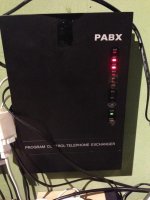kyodai
Experienced Member
I just found interesting info - with a voice modem you can (if supported) issue a VTS command to generate a tone.
In the US the dialing tone is interestingly not the typical 425Hz tone but a mix of 350 and 440 hz tones.
To do that from the modem you could use it like this:
# resets the modem
ATZE1
# puts the modem into voice mode
AT+FCLASS=8
# opens the connection
AT+VLS=1
# produces the tone for 2550 miliseconds (Maximum time as i see it)
AT+VTS=[440,350,255]
# closes the connection so it can answer
ATH
# answers the connection
ATA
In the US the dialing tone is interestingly not the typical 425Hz tone but a mix of 350 and 440 hz tones.
To do that from the modem you could use it like this:
# resets the modem
ATZE1
# puts the modem into voice mode
AT+FCLASS=8
# opens the connection
AT+VLS=1
# produces the tone for 2550 miliseconds (Maximum time as i see it)
AT+VTS=[440,350,255]
# closes the connection so it can answer
ATH
# answers the connection
ATA



